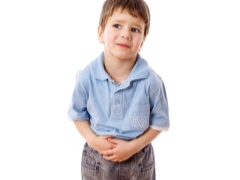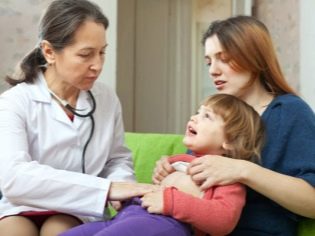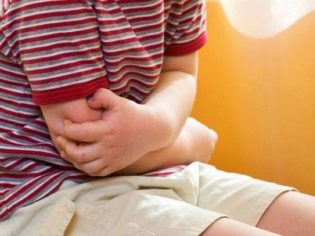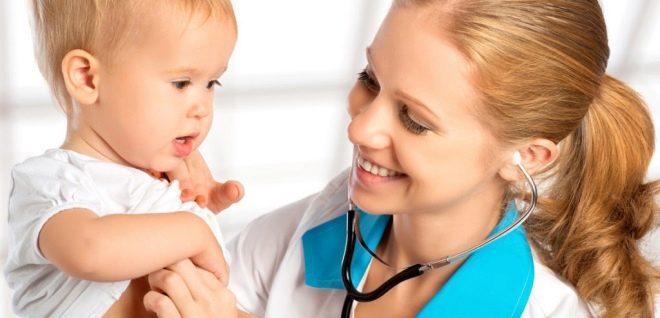Cholecystitis in children
Diseases of the gallbladder occur in children with the appearance of a variety of symptoms. One of these pathologies is cholecystitis.
What it is?
Inflammation of the inner wall of the gallbladder is called cholecystitis. This pathology can develop at any age. In children, cholecystitis is accompanied by the development of numerous symptoms associated with impaired digestion.
Quite rarely, only the inner wall of the gallbladder is involved in the inflammatory process. More often, inflammation also goes to the biliary tract. Such pathologies are most often found in children's practice. This feature in children is due to the anatomical proximity of all internal organs.
According to statistics, children have much more often chronic forms of this disease. Acute and purulent variants are recorded in children's practice much less frequently. In some cases, the course of the disease may be latent. In this situation, no adverse symptoms of pathology appear.
Usually, the worsening of the disease occurs when the diet is disturbed or the course of the disease worsens.
The development of the disease lead to a variety of causal factors. Some types of bacteria can cause severe inflammation, which quickly leads to the spread of the inflammatory process in all biliary tract. The most common causes leading to the development of the disease are giardia and worm infection.
Secondary foci of infection also contribute to the development of inflammation in the gallbladder. Chronic tonsillitis caused by bacterial flora, with unproven treatment, can lead to the appearance of adverse cholecystitis symptoms in a child.
The effects of appendicitis, gastritis, scarlet fever or influenza can also lead to the spread of inflammation to the organs of the gastrointestinal tract.
Kinds
Depending on the time of occurrence of adverse symptoms of the disease, all clinical variants of the disease are divided into acute and chronic. The first reported disease is called the acute form. This clinical variant is quite often registered in children from 8 to 13 years.
Acute cholecystitis is accompanied by an increase in blood levels of lysolecithin. With functional blockade of the gallbladder its content increases many times. This clinical condition contributes to pronounced damage to the mucous membrane of the inflamed organ. Such disorders cause the strongest aseptic inflammation in a sick child.
Over the course of acute cholecystitis in the damaged organ, the blood supply is disturbed as a result of severe biliary hypertension. Prolonged blood stasis contributes to an increase in the size of the gallbladder, which leads to the appearance of specific symptoms of the disease in a child.
The chronic form of the disease is accompanied by alternation of several periods of remission and exacerbations. This variant of the disease can be purulent and catarrhal. The appearance of pus is the most unfavorable symptom. To eliminate the symptoms of purulent cholecystitis, antibiotic medications are required, as well as more intensive treatment.
The adverse course of chronic suppurative inflammation of the inner wall of the gallbladder can lead to the appearance of various abscesses. In this clinical situation, pus formed in the primary focus can spread to neighboring internal organs.
Purulent abscesses are difficult to diagnose, and treatment is carried out only in a hospital.
Symptoms
The severity of adverse clinical signs may be different. Children of earlier age can carry the exacerbation of chronic cholecystitis much harder. The increase in symptoms usually occurs within the first few hours of the onset of the acute period of the disease.
The most frequent clinical sign of this disease is the appearance of strong bitterness in the mouth. Usually this symptom increases or appears after eating fatty and fried foods. The tongue of a sick child is usually covered with a white or yellowish bloom. Toddlers complain about the lack of or loss of appetite.
Vomiting or nausea are also quite common symptoms that occur during exacerbation of cholecystitis. Children have a broken chair. Quite often, this clinical sign is manifested by persistent constipation, which occurs due to insufficient flow of bile necessary for proper digestion.
Abdominal pain is a classic symptom that accompanies this disease. The intensity of the pain syndrome may be different.
Some babies feel only heaviness in the right hypochondrium. The intensity of the pain syndrome increases after an error in the diet and the abuse of fatty foods. In some cases, the pain may spread from the right hypochondrium to the unilateral arm and under the scapula.
The duration of the pain syndrome may be different. On average, it ranges from 5-15 minutes to several hours. Sick kids note the relationship between the appearance of pain and the use of fatty and fried foods. The nature of the pain syndrome is usually aching, pulling.
During the acute period of the disease, the child's pain increases in the right hypochondrium. This symptom increases with pressure in this area. In some cases, the abdominal wall tension increases in the abdomen. This pathological stress occurs as a manifestation of a protective reaction to severe inflammation.
The latent form of the disease for a long time does not manifest itself. The first symptoms of the disease can develop only a few years after the onset of the disease. Constant errors in the diet only contribute to the active progression of the disease. Before the onset of pain in a baby, nausea and a feeling of heaviness in the right hypochondrium are noticeably worse.
In adolescence, a sick child also has concomitant symptoms of liver damage. As a rule, these clinical signs are manifested by yellowing of the skin.
In case of a pronounced violation of the outflow of bile, the child may develop persistent itching, which brings the child great anxiety and discomfort.
Diagnostics
History taking plays an important role in establishing the correct diagnosis. To clarify the degree of damage to the internal organs requires a clinical examination with mandatory palpation of the projection of the gallbladder. During such a study, the doctor may establish specific symptoms that occur when the organ is damaged.
In the period of acute illness, laboratory tests are very informative. They help doctors determine the severity of functional disorders.
When inflammation of the gallbladder in the blood increases the amount of total bilirubin. Its fractions also change.
Conducting instrumental studies in establishing the diagnosis is also necessary. To establish the diagnosis, doctors prescribe an ultrasound examination of the abdominal cavity. The thickening of the inner wall of the gallbladder and the signs of bile stasis in it indicate that the child has signs of cholecystitis.
Treatment
For the treatment of the acute period of the disease, various drugs are used. The scheme of such treatment is determined by the attending physician. Both pediatricians and pediatric gastroenterologists can treat acute or chronic cholecystitis.To identify this disease in children, a mandatory medical examination is carried out, allowing sufficient control over the development of the disease.
Medical nutrition in the treatment of cholecystitis plays the most important role. In the diet of sick kids, all fatty and fried foods are limited. Polyunsaturated fatty molecules are used as fats. They are contained, as a rule, in unrefined vegetable oils, as well as red fish.
All refined fats, as well as roasting are strictly excluded.
A kid suffering from cholecystitis should eat at least 5-6 times a day in small portions. The amount of food should not exceed the age norm. Daily calories should also be strictly observed. The basis of the diet should be high-quality protein foods and cereal porridge. Food should be supplemented with fruits and vegetables containing sufficient amount of plant fiber.
The acute period of the disease, doctors recommend to spend in bed. Compliance with bed rest will prevent the development of dangerous complications in the future. To eliminate the adverse symptoms of bacterial purulent forms of cholecystitis is possible only with the help of medicinal antibacterial drugs.
Drugs based on penicillin, chloramphenicol and other substances are used as such agents.
.
If the cause of the exacerbation of cholecystitis is giardiasis infection, then in this case specific preparations based on aminoquinol and furazolidone are prescribed. Age dosages of these funds are selected by the attending physician. To eliminate the adverse symptoms required course application.
Symptomatic therapy includes the appointment of choleretic drugs. They can be represented by both herbal and pharmaceutical drugs. For babies fit broths made from oats, bearberries, corn silk. A variety of physiotherapeutic procedures can fix the positive effect.
These include ozokerter therapy, UHF-treatment, paraffin therapy, as well as diathermy.
For more information about cholecystitis, learn from Dr. Komarovsky, looking at the following video.



































